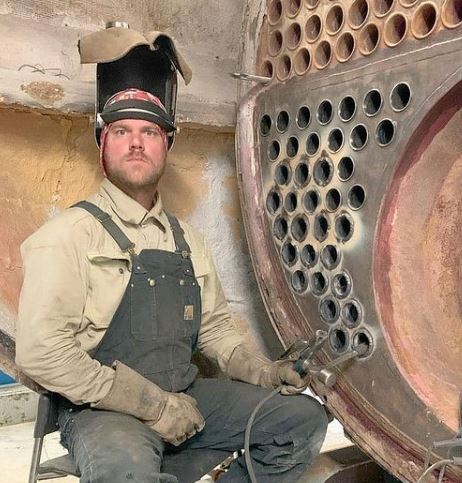TIG welding is often considered a good choice for beginners because it allows for high control and precision. TIG welding uses a tungsten electrode to produce the weld, and the welder can manually feed the filler metal into the weld puddle. This gives the welder more control over the weld and produces a high-quality result. TIG welding also produces a cleaner weld than other methods, as it does not rely on flux to shield the weld from contaminants.
This makes it easier for beginners to produce clean welds and helps reduce the risk of defects. However, TIG welding requires a higher level of skill and training than other welding methods, so it may not be the best choice for everyone.

Why Tig Welder Good For Beginners
TIG welding is good for beginners as it can be used on various materials, including aluminum, stainless steel, and copper alloys. This versatility allows beginners to practice and develop their skills on different materials and allows them to work on a variety of projects. Additionally, TIG welding produces a narrow and shallow weld bead, which can be beneficial for beginners as it is easier to control and produces a more aesthetically pleasing result.
However, it is worth noting that TIG welding is a slower process compared to other methods, so it may not be the best choice for high-production or large-scale projects. Overall, TIG welding can be a good choice for beginners due to its high level of control and precision, versatility, and ability to produce clean welds.
Advantages Of Tig Welding For Beginners
TIG welding is a precise and clean method with several advantages over other welding processes.
Some of the advantages of TIG welding for beginners include the following:
- Precision: TIG welding allows for precise control of the welding process, including the heat input, the filler metal addition, and the arc length. This makes it suitable for welding thin materials and producing high-quality welds.
- Cleanliness: TIG welding produces a very clean weld, as the process does not involve using consumable electrodes that can produce slag or other contaminants.
- Versatility: TIG welding can be used on various materials, including aluminum, stainless steel, and other non-ferrous metals.
- High-quality welds: TIG welding produces strong, high-quality welds that are resistant to corrosion and have a good appearance.
- Safety: TIG welding is a relatively safe process, as the welder is protected from the arc by a shielding gas and a torch equipped with a finger switch for turning the arc on and off.
Overall, TIG welding is a highly effective and versatile welding process suitable for various applications, including precision fabrication, automotive repair, and aerospace work.
Challenges Of Tig Welding For Beginners
TIG welding is a precise and clean method, but it can present some challenges for beginners. Some of the challenges of TIG welding include the following:
- Skills required: TIG welding requires high skill and precision, as the welder must manually feed the filler metal and control the heat input and arc length. This can be challenging for beginners who need to become more familiar with the process.
- Slowing down: TIG welding requires the welder to work slower than other welding processes, as the welder must carefully control the weld pool and filler metal addition. This can be frustrating for beginners who are used to faster welding processes.
- Expense: TIG welding equipment can be more expensive than other welding equipment, as it requires a power source, a TIG torch, and shielding gas.
- Limited penetration: TIG welding typically has limited penetration compared to other welding processes, making it more challenging to weld thicker materials or achieve full penetration welds.
- Materials limitations: TIG welding is unsuitable for all materials and may not be effective on certain types of dirty or contaminated materials.
Overall, TIG welding requires a high level of skill and precision and can be challenging for beginners who need to become more familiar with the process. However, with practice and proper training, TIG welding can be mastered and become a valuable tool for many welding applications.
Conclusion
In conclusion, TIG welding is a precise and clean method that involves using a non-consumable tungsten electrode to produce the weld. It is a versatile welding process used on various materials, including aluminum, stainless steel, and other non-ferrous metals. TIG welding offers several advantages for beginners, including high precision and control, the ability to weld thin materials, and clean and aesthetically pleasing welds. However, it also has some challenges, including needing more skill and practice to master, more expensive equipment and consumables, and a slower welding speed than MIG welding. Overall, TIG welding is a valuable tool for a wide range of welding applications and can be mastered with proper training and practice.

It’s been years since I got into welding as a side hustle. It’s been so long since Doing All kinds of welds for business and pleasure as this is my hobby. Being in this field I have learned from hands-on-experience also came to know what gears work and what doesn’t. The Tig Welder is my own platform where I use to share my experience.






Leave a Reply